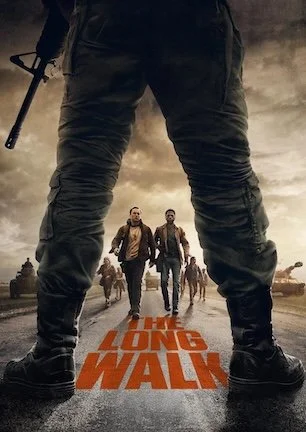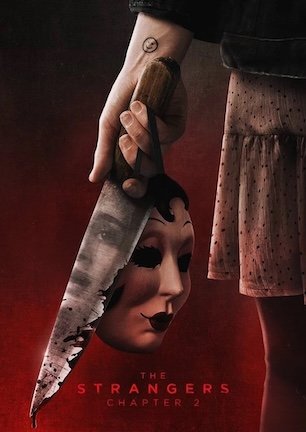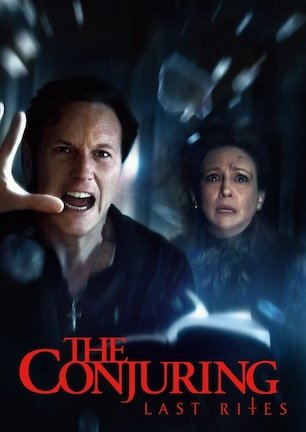Studio: Columbia Pictures
Director: Danny Boyle
Writer: Alex Garland
Producer: Andrew Macdonald, Peter Rice, Bernard Bellew, Danny Boyle, Alex Garland
Stars: Jodie Comer, Aaron Taylor-Johnson, Jack O’Connell, Alfie Williams, Chi Lewis-Parry, Edvin Ryding, Christopher Fulford, Stella Gonet, Ralph Fiennes
Review Score:
Summary:
Born and raised in an isolated community, a young boy has his limited worldview broadened when he ventures into mainland territory overrun by victims of the Rage Virus.
Review:
The core characters in “28 Years Later” have routine traits and tropes swirling in their DNA helixes. Yet they also possess subtle complexities to their personalities that make them emotionally engaging as authentic-feeling human beings rather than purely fictional plot-pushers.
Portrayed by Aaron Taylor-Johnson, Jamie initially presents as a strict father stereotype, forcing his 12-year-old son Spike to mature at top speed by braving the dangers of an infected-overrun Britain with only a wooden bow for defense. Except Jamie isn’t an average alpha male defined by chest-thumping bravado. He does strike Spike in a moment of frustration, but he also encourages his son, publicly expresses pride in the boy, and soothes Spike’s insecurities with earnest reassurance one can only get from a father figure. Desires to be domineering don’t motivate Jamie. For a man living in a “Survivor”-like settlement separated from the rest of the world, Jamie has a lot going on with raising his son, hiding an extramarital affair, and caring for his mentally ill wife Isla.
Bedridden with an undiagnosed condition that’s essentially equivalent to dementia, Isla has decidedly less to do. Jodie Comer is too intuitive of an actor, and Alex Garland is too thoughtful of a writer, to let Isla waste away as a sentient sack stuck in a single room for the entirety of the runtime, however. When Isla gets an opportunity to venture into the wider world, her characterization’s horizons broaden as well. Through a cherished memory of time spent with her father, the empathy she instinctively shows toward a pregnant infected, and the knowing nods she gives when her devastated son learns of the imminent fate facing her, Isla evolves far beyond an inconvenient object into a truly tragic figure.
“28 Years Later” can be considered several things, with one of those things being a coming-of-age tale. Spike’s journey isn’t dissimilar from Carl’s in “The Walking Dead,” or from any same-aged kid ripped out of childhood to adapt to a post-apocalyptic landscape. It’s true that his arc follows a common shape that thrusts him into expected situations where he often alternates between hesitant, horrified, and heroic. But Spike also relies on his own reasoning, exhibiting growth that comes through astute observations, genuine compassion, and sheltered innocence challenged by harsh realities.
Unfortunately for “28 Years Later’s” restricted ability to be consistently entertaining or thematically thought-provoking, the story these people are plugged into doesn’t use their depth to its fullest potential. “28 Years Later” punches the same door code as many peers who’ve previously entered these premises, offering up recycled sights of self-important soldiers pulling triggers out of paranoia, suspicions about who could be infected, narrow escapes, and mindless monsters biting their way through a ruined world.
When compared to the ravaged hellscapes depicted in other zombie media, “28 Years Later” suggests that after the titular timeframe, even the corner of the world closest to the country containing the outbreak is doing fairly fine, all things considered. Jamie, Spike, and Isla live on an island with plentiful livestock, intact homes, and hard-working craftspeople; their community is basically a fully functioning society protected by a guarded gate and made inaccessible by surrounding water. If Jamie and Spike didn’t dare enter the overrun mainland for some bizarre tradition, their family could have continued living undisturbed in relative comfort.
On one hand, it’s refreshing to see a survival settlement where bloodthirsty biker gangs and suicidal saboteurs don’t pose persistent threats. On the other hand, it’s curious commentary to depict a plagued place where everyone appears content, responsible, and at peace with their station. At the very least, it's not a particularly action-inducing backdrop.
The bigger disservice “28 Years Later” does to itself lies in serving a different narrative purpose altogether. Shot back-to-back with a sequel titled “28 Years Later: The Bone Temple,” and reportedly part of a planned trilogy, this film underwhelms as an individual effort because it feels like one-third of a story, which it evidently is.
An odd prologue and an odder epilogue exist exclusively to establish a live-action comic book character, Sir Jimmy Crystal, who appears nowhere else in this movie, though he will presumably play an integral role in the follow-up. In the meantime, Jimmy’s reemergence as a cartoonish cultist during “28 Years Later’s” conclusion takes the tone into a U-turn that subverts the serious stakes preceding it. No matter what a viewer gets out of the movie, whether it’s undead action, meaningful melodrama, or parallels with British history, there’s an inescapable sense that these disparate parts are still missing key pieces to link them together.
Planting seeds for a sequel is one thing. Being stripped out of a larger saga undermines a movie’s current value to the audience at hand. “28 Years Later” might play better in retrospect once the multi-film project materializes in full. Although it’s as visually rich as one would expect from director Danny Boyle, and although writer Alex Garland cements a strong foundation at the start, the movie’s conflicting objectives to be poignant, frightening, funny, standalone, and one link in a bigger chain leave “28 Years Later” in search of fully satisfying storytelling.
Review Score: 60






It assumes everyone watching must be a dimwit too dense to understand how the most basic storytelling concepts work.